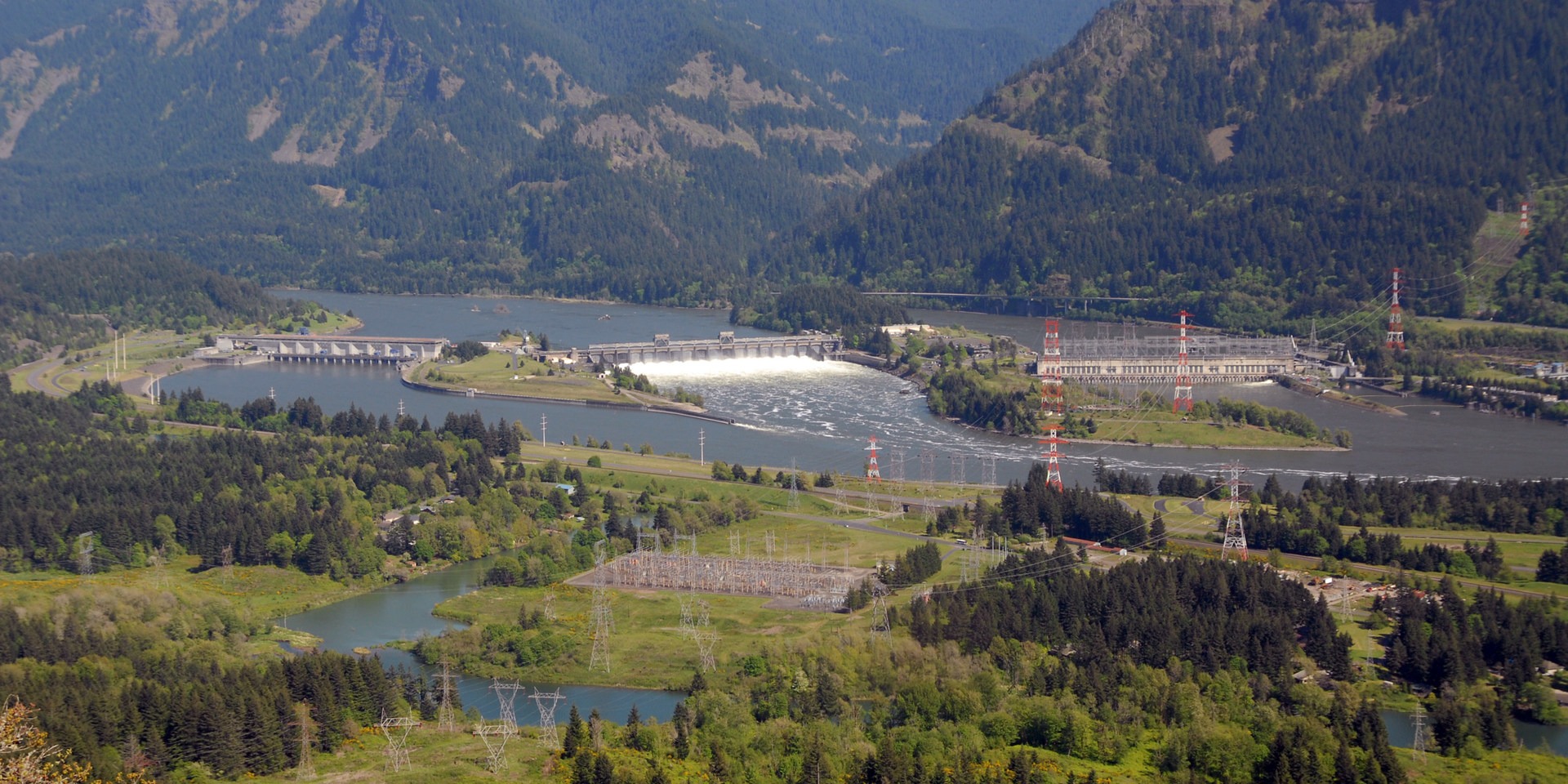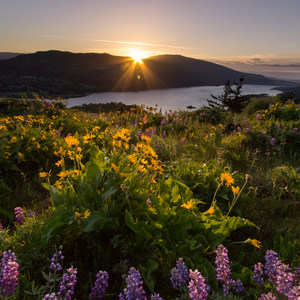You are here
Water is the lifeblood of the Columbia River Gorge. Its namesake—the behemoth Columbia River—has meandered from the Rocky Mountains of British Columbia to the Pacific Ocean for thousands of years as its major tributaries carve deep grooves into the surrounding valleys and hillsides. By volume, it’s the fourth largest river in the United States and the largest river in North or South America that finds its terminus in the Pacific Ocean.
This region of the Pacific Northwest, spanning from the confluence of the Deschutes River to the outer reaches of Troutdale, is the great natural border between Oregon and Washington. The protected Columbia River Gorge National Scenic Area provides critical habitat for a plethora of species, most notably salmon, and has been an American cultural epicenter since long before Lewis and Clark “discovered” it. As an added bonus, it’s an immense playground for recreationalists, not only serving up world-class windsports like kiteboarding and windsurfing, but also, arguably, the nation’s most coveted whitewater run (The Little White Salmon), and miles and miles of hiking and tacky singletrack biking trails.
Among the most noticeable of human influences on the natural splendor of the Gorge, and one that's a continual cause of contention between environmentalists and industrialists, is the existence of major dams. It's a sure thing that the new federal administration and environmental advocates will battle over use and protection in the coming years. Here's what you need to know.
Water: The Beating Heart of The Gorge
The Columbia River carves and crashes its way through 1,243 miles of widely varied terrain gathering force and volume from major tributaries like the Snake, the Willamette, and the Kootenay rivers. In the heart of the Columbia River Gorge, it has cut a narrow channel through the 600-mile volcanic Cascade Range, and it can be measured at over 4,000 feet from peak to riverbed.
Naturally, industrious movers and shakers were taken by the thunderous power of the massive river. Upon the creation of the United States Bureau of Reclamation in 1902, plans were set to built the colossal Grand Coulee Dam with the intent to provide irrigation to 6,000 surrounding acres in central Washington.
Today there are 14 dams in place along the entirety of the river: three in Canada and 11 in the U.S. In the eyes of the federal government, the most important function of these dams is to provide hydroelectric power to a massive energy grid. In this sense, these dams are quite successful—the Columbia River Basin (which encompasses the Columbia River and all of its tributaries) provides more than 40% of all U.S. hydroelectric generation. Other benefits of the dam include flood control, navigation, stream flow regulation, storage and delivery of stored waters, and the reclamation of public lands and Native American reservations.
Historical Environmental Impacts of Dams
Where there is industry, there is invariably ecological consequence and backlash. The Columbia River, particularly in the Gorge, has provided crucial habitat for steelhead and salmon returning to their traditional spawning sites. The construction of the two major dams in the Gorge—the Bonneville Dam and the Dalles Dam—have greatly affected migration and, periodically, put the two protected species at risk due to rising water temperatures.
A report that was published by Columbia Riverkeeper highlighted the extreme pressure put on spawning sockeye salmon in 2015 thanks to the huge stagnant reservoirs of water that soak up the hot summer sun coupled with the dangerously low snowpack of the preceding winter. That summer scientists estimated that over 277,000 salmon, about 96% of the total run, perished in the Columbia and Snake rivers as a direct cause of rising temperatures. Lethal temperatures for these fish are in the low reaches of 70 degrees. That summer, temperatures sat constantly above 72 degrees.
Though the Environmental Protection Agency exercised foresight and launched a project to combat the trend before it came to fruition, the campaign only lasted from the late 1990s to the early 2000s. The effort has been kicked back to local groups like the Columbia Riverkeeper, though the federal government and the EPA are still legally obliged to work toward creating a plan to save these critical species.
The Gorge: In Environmental News
In most recent news, environmental and fishing groups have filed a formal lawsuit against the EPA for neglecting its obligations under the Clean Water Act.
The Columbia Riverkeeper, in conjunction with Snake River Waterkeeper, Idaho Rivers United, Pacific Coast Federation of Fishermen’s Associations, and the Institute for Fisheries Resources, claim that Scott Pruitt, the newly minted head of the EPA under the Trump Administration, is flouting his duty to assign an adequate budget to work toward lowering the water temperatures in the Columbia and the Snake rivers.
In the words of Executive Director of Columbia Riverkeeper, Brett VandenHeuvel, "We need a plan to deal with climate change and rising water temperatures in the Columbia, or we may be telling our kids stories about salmon instead of teaching them to fish."





Comments
Sign In and share them.